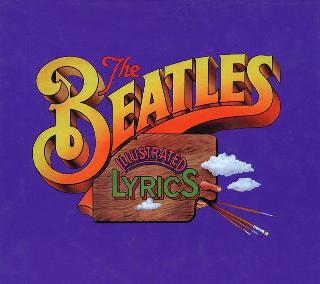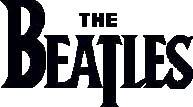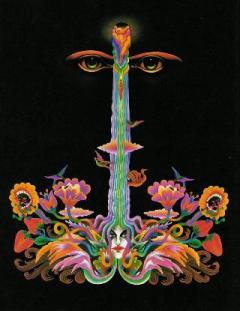Index
Home
Vorige
Ticket to Ride
Composer(s) : Lennon and McCartney
Year : 1965
Chords/Tabs: Ticket to Ride
Notes on "Ticket To Ride" (TTR)
KEY A Major
METER 4/4
FORM Intro -> Verse -> Verse -> Bridge -> Verse -> Bridge ->
Verse -> Outro (fadeout)
GENERAL POINTS OF INTEREST
Style and Form
- After the folksy originals and nostalgic covers of the Beatles For
Sale album, "Ticket To Ride" brings with it a measure of tight toughness
that is most welcome to those wondering wither this erstwhile sharp
edge of the group's attitude and style had fled following the Hard
Day's Night album.
- The form is an ordinary two-bridge model with only one verse in the
middle and no instrumental section. The special kicks here are to be
found in the arrangement, especially in its exploitation of texture,
rhythm, and harmonic dissonance.
Melody and Harmony
- Although the tune does not make a primarily bluesy impression, both
the flat 7th and minor 3rd scale degrees do bear some melodic emphasis
in the verse and bridge, respectively.
- Five of the seven chords that naturally occur in the home key as well
as the flat-VII chord are used. No other more exotic chords show up nor
is there any hint of modulation. This relatively bland harmonic diet
is spiced up by the liberal use of free melodic dissonance and a certain
suspense factor created by the exceedingly slow harmonic rhythm.
- In the dissonance department, Major ninths and seconds appear as though
a leitmotif. Not only is there an unusual number of 9th chords in the
song, but the bare interval is also found within the opening ostinato
figure as well as in the repetitious vocal line which takes the song
out at the end.
Arrangement
- The ostinato figure played by the solo 12-string guitar at the outset
provides a great deal of unity to the song. As we've seen in other
ostinato-driven songs of the Beatles, these recurring, motorized little
figures seem to create the illusion of being there in the backing track
more of the time than is actually so. For example, if the figure is
apparent at both the beginning and end of a section, as long as there
is something of sufficient interest to divert your attention in the
middle, you will subconsciously "assume" that the figure has continued
all the while, even though if you double check carefully you'll find
that this is not so!
- The ostinato used here's not as distinctively melodic as the ostinati
in either "What You're Doing" or
"Day Tripper", but it does have a
wrenchingly syncopated rhythm which carries all the through to the
characteristic backbeat of the intro and first two verses:
> > >
rhythmic emphasis 1 & 2 & 3 & 4 &
ostinato A E C#A B E
> > >
- As a foil to all this, the tambourine is relegated to simply marking
off the 2nd and 4th beats of virtually every measure in every verse.
- The vocal arrangement is fussier than we've seen in a while, with three
alternating textures used in the verse, alone. The first half of the
first phrase is sung by John, solo and single-tracked. Paul joins
him above on funky counterpoint for the remainder of this phrase
into the first half of the next one, and then leaves John exposed
solo at the phrase's end. John then sings the third phrase double
tracked with Paul joining him for a final touch of counterpoint at
the end of the fourth phrase.
SECTION-BY-SECTION WALKTHROUGH
Intro
- The intro consists of a four-fold presentation of the ostinato figure
over the I chord. The ensemble joins the solo guitar with a slow
dramatic drumroll just before the downbeat of measure 3:
|A |- |- |- |
- The parallel between this and "You Can't Do
That" or "Day Tripper" is noteworthy. The
accentuation here by the drumming of the syncopated rhythm inherent in
the guitar ostinato is especially gripping and literally
pulls you into the music.
- Say, is that a small touch of organ or harmonium used as a wash
behind the solo guitar opening ? If so, does it continue throughout,
just buried in the mix ? or perhaps, does it drop out quickly once
the rest of the ensemble gets going ?
Verse
- The verse sixteen measures long, built out of four phrases
equal in length. The section more logically splits right down
the middle, with the first half providing an eight-measure
expository section that harmonically opens up to the V chord, and
the second eight measures providing a refrain-like ending which
veers back toward the I:
|A |- |- |- ||A |- |b |E |
A: I ii V
|f# |D |f# |G ||f# |E |A |- |
vi IV vi flat-VII vi V I
- The tune has an unusually high amount of rhythmic syncopation against
the underlying beat (on "four-AND") as well as melodic dissonance
against the underlying chords. I'll leave the majority of such
details as an exercise for the reader though two examples here are
noteworthy. First off, the melodic sustaining of the pitch E over
the b chord in measure 7, on the second syllable of the word "away".
Even better is the the climactic event over the G Major chord in
measure 12, with John singing the pitches F#-E-C# on the stretched
out word "ri-i-de", none of which is consonant with the chord below it.
- The three-way alternating pivot off the vi (f#) chord is one of
the more novel harmonic gambits we've ever seen the Beatles pull;
first to the IV, then to the flat-VII, and ultimately to the V, which
under the circumstances is the most comfortingly "functional" of the
three choices. It kind of reminds of the feeling one has in a chess
game where you think you've been check-mated, but in a half-panic, on
considering your several brute-force logical alternatives, you
eventually discover with some relief that there is still at least one
legal move available to you with which to continue the game.
- The vocal counterpoint at the beginning of the second phrase not
only features their trademark parallel, open fourths, but Paul's
initial stress on the pitch B provides a development of the added-
ninth flavor we've described as inherent in the opening ostinato
figure. Also note how John's initial stress on G natural here adds
a subtle, partly hidden touch of the blues (I'm also very partial
to the little rapid-fire 16th note run with which John ends the
phrase):
Paul: B B A G A A
John: G G E D E EDC#
Bridge
- The bridge is eight measures long and built out of a parallel-style
repeat of the same four-measure phrase:
|D |- |- |E |
IV V
- Bridge-ly contrast is provided by virtually every compositional
parameter:
- the vocal arrangement shifts to straight-away parallel thirds except
for a couple of stray eighth notes in which John is left exposed solo
for a split second (check out the second syllable of the word "goodbye.")
- the rhythm section, including the tambourine, shifts away from wrenching
syncopation to a pattern of relatively even-handed eighth notes in which
the off-beat (on 2 and 4) pattern, first heard from the tambourine in
verses, now prevails in the drums.
- the harmony, even though it features no kind of modulation,
does manage to stay entirely away from the I chord, the
section ending firmly on the way back towards it.
- A new guitar riff is used at the very end of the section to lead
back into the next verse. Its melodic and rhythmic gesture are
reminiscent, albeit not slavishly so, of the opening lick. The F#
that marks the apex of this new figure makes for yet another added
ninth chord here.
Verse Variants
- This song has a higher than average number of small twists applied
to the arrangement of its later verse sections. As spontaneous as
these details sound to us, I rather suspect that at least some of them
were planned quite in advance.
- Here, in the third verse, John adds the word "yeah" to the end
of the second line (in addition the one that repeatedly appears
at the end of the first line), and he prefaces the third line with
an "Oh" (or is it an "aw" ?); the latter variation being repeated
in the fourth verse as well.
- Ringo provides an evenly beaten sixteenth note pattern as a fill
between the second and third lines of the third verse in place of the
plain roll he uses elsewhere in the song. In the final verse he plays
in this spot no roll nor fill, but only a single whack "on FOUR!".
- One particular variant feature rises above the status of mere detail
to assume structural, and perhaps subtextual significance. The hard
syncopations mentioned above which so pungently characterize this song
are actually found to be very much subdued starting right after the
second verse. Granted, we already noted that the bridge itself dispenses
with the syncopation as a matter of contrast. But look ahead -- in
both of the final verses, Ringo's drumming sticks with the more evenly
played eighth note patterns introduced in the bridge instead of
returning to the wrenchingly syncopated pattern; this, in spite of the
fact that the guitar ostinato (from which his syncopoated patterns
were derived in the first place) does continue to make its own
appearance. This could hardly have been accidental and I find
myself pondering its motivation -- did they discover that the
wrenching rhythm when carried all the way through was simply too
much of a good thing, or is there some subtle poetry embedded
in this change drumming?
Outro
- The question of what manner of poetry may be conveyed by a change
of beat is further sharpened by what happens in this outro where the
syncopation is loosened even further than it was for the bridge.
- This time, the effect is one of a sudden, free-wheeling, accelerating
release of all tension. John would later use a similar effect at the
end of "She Said She Said".
- Also here at the very end, the final vocal lick, which is otherwise
double-tracked in unison, splits out for an instant to include one
last example of a Major second sonority.
SOME FINAL THOUGHTS
- "Ticket To Ride" was recorded after more than a two-month hiatus
(11/27 to 2/15) in the Beatles attendance at Abbey Road. One gets
used to the song's having been tucked away on the Help! album
as the last song on "side 1", but in truth, it was the first song
recorded after the Beatles For Sale album was released, and it
appeared as the A-side of a single several months before the film was
released.
- Once you get the chronology straight in your mind, it's hard to listen
to the song without feeling as though you've crossed a frontier.
Lewisohn himself comments on this, though his perspective is entirely
on the recording process changes that kicked in at this point in time;
i.e., the practice of perfecting the rhythm and backing track first
before adding everything else on later as overdubs.
- I'm thinking more of style, though whatever compositional
innovations are to be found in this song are not without their own
irony to the extent that they represent at least as much a return to
erstwhile values as much as they do a forward evolution. Yeah, this
one looks at least as far ahead as "Day Tripper",
but it equally so picks right up where "A Hard
Days Night" left off, followed as it was by the anomalistic
Beatles For Sale album.
Regards,
Alan (awp@bitstream.com OR uunet!huxley!awp)
---
"I ride this train regularly; twice a week!" 082592#65
---
Copyright (c) 1992 by Alan W. Pollack
All Rights Reserved
This article may be reproduced, retransmitted, redistributed and
otherwise propagated at will, provided that this notice remains
intact and in place.
Ook op Help!:
Ook op 1962-1966:
Ook op Live At The BBC:
Ook op 1:
(c) 2024 Serge Girard


 (c) Alan Aldrigde, The Beatles Illustrated Lyrics
(c) Alan Aldrigde, The Beatles Illustrated Lyrics